I guess that one of the main reasons why you are not already selling print on demand yoga mats is the fact that your store is not about yoga.
The good news is that yoga mats ‘could’ appeal to a much larger market and if your niche print on demand store has a female audience then you probably could sell yoga mats.
Yoga mats is not just for yoga stores. In fact, if you sell print on demand products then having a store focussed around yoga is probably not a great idea. Trying to compete with the likes of LuluLemon is not a smart idea.
In this article we will explore some key ideas around selling print on demand yoga mats and we will look at both the pro’s and con’s and potential print on demand providers.
Print On Demand Providers For Yoga Mats
Numerous print on demand providers have attempted offering yoga mats in the past. Back in 2016 there was a rush to offer yoga mats as it was touted to be the next hot product.
Many print on demand providers were quick to offer yoga mats and many were just as quick to pull them from their line-up.
Yoga mats are not easy products to offer for print on demand. It is a sublimation product where a design gets printed on to a fabric (which is quite large) and then gets bonded on to a rubber mat.
There’s a lot that can go wrong with printing a yoga mat. If you compare this to printing a t-shirt or a mug then it’s not hard to see why so many print on demand providers have moved on from yoga mats.
There are currently 3 providers that offer yoga mats. Gooten has probably been the one who has offered yoga mats the longest and they are a very stable and very reliable provider.
Pixels is relatively new but they offer a superior product. Their yoga mats look really nice and can easily compare with high quality mats you find in many shops.
While Gooten and Pixels are mostly aimed at Shopify stores and Etsy sellers, the third option is with Society 6.
Society 6 is a print on demand platform similar to RedBubble and they are mostly focussed on offering artists a place to sell their artwork on products.
Let’s briefly look at these 3 suppliers and what they have to offer.
1. Gooten
Gooten has been one of my top 3 print on demand partners for some time. They are well established, reliable and easy to work with.
Gooten’s yoga mats are okay. For the vast majority of casual yoga users it will be sufficient. They offer a 68 x 24 inch (172cm x 61cm) mat with vibrant dye sublimation print on a microfiber polyester face.
That is bonded on to a 1/4 inch (6 mm) foam mat with non-slip underside. The fabric edges are fairly well finished but can be prone to separation from the foam over time.
The print quality is great and the overall look and feel of the mat is pretty good. Can you charge $100 for Gooten’s yoga mat? Probably not.
I typically price these mats at $74.95, $79.95 or $89.95 at the higher end. You have to also factor in shipping at $10 in the USA and around $20 internationally for standard flat rate shipping.
At a cost price of $42.90, the $80 price point leaves you with a $27 profit if you offer free shipping. Not bad at all.
Gooten has had one or two patches where they had issues with availability but in large they are the most reliable supplier of yoga mats for print on demand.
Most of the Etsy sellers that sell personalized yoga mats seem to use Gooten and most come in at around the $75 price point.
Offering personalization through Gooten is not automated like it is for Printful. You will need to create custom designs and manually change the design file for each order.
This is not a big job but it can suck up a lot of time if you get a dozen orders per day. At $27 per sale this does not bother me in the least though :).
2. Pixels
Pixels is one of the newer print on demand apps in the Shopify app store and they have been hit really hard with bad reviews. Most of it is not justified based on my experience (which is quite limited).
Pixels is not some fly-by-night print on demand company. It is actually driven by Fine Art America which is one of the biggest print on demand websites.
They have huge capacity to print and deliver. They have been serving artists for more than 10 years and the platform was originally intended for artists to be able to easily sell their artwork online.
They quickly grew from canvas and poster sales and expanded into apparel and a variety of print on demand products.
Like SPOD (backed by Spreadshirt), they saw an opportunity to tap into print on demand with a Shopify app and like many others before them they are struggling with their app and smoothing out integration.
As a background, that should put you at easy with the fact that it is a big and established company and they probably won’t disappear overnight.
Back to yoga mats…
Pixels offer a print on demand yoga mat that is far superior to the Gooten one. In fact, this is a high quality mat that can stand up against some higher end mats.
The mat is 72 x 24 inch (183cm x 61cm) and also bonded on to a 1/4 inch (6 mm) foam mat with non-slip underside.
The edges are beautifully finished and the prints are vibrant and the top fabric has a really niche feel to it.
It also comes with a really nice bag with shoulder strap that adds even more value to the product.
The price reflects this though. The base price is $55 plus $20 shipping worldwide – including domestic USA shipping. This leaves you with a $75 base cost which is high.
These Pixels yoga mats can easily be sold for $100 though. That leaves you with a profit of $25 on a $100 sale which is okay.
The real challenge is that they do not offer any Etsy integration and although you can create manual orders it can quickly become very messy.
Trying to sell yoga mats on your Shopify store could be great but if you have to cover advertising costs for a front end product then the $25 profit simply won’t cut it.
This will be the perfect product to offer as an upsell on your Shopify store. It is a high quality product with a high perceived value and one that can match it with higher end yoga mats.
3. Soceity 6
I’m not going to say much about Society 6 simply because their fee structure is crap. For the most part you can only earn about 10% of each sale which on a $50 yoga mat is $5.
Unlike many other print on demand platforms like Redbubble, Spreadshirt and TeeSpring you can’t really control your price points which severely limits your profits.
If you are looking for an easy way to simply slap some designs on yoga mats and hope for the best then give Society 6 a whirl.
I will not recommend them if you are trying to build a business around selling yoga mats.
Why Sell Print on Demand Yoga Mats
Jumping on to print on demand products that are not flooded with competitors could be a great idea.
There could also be a reason why there are not that many competitors. Both arguments are valid but you always need to approach any niche or product with the right mindset that you COULD make it work.
Understanding what makes yoga mats a great print on demand product can help shed some light on whether it is the right fit for your store.
1. Unique Product
Print on demand niche stores have become very drab and boring. Most sell almost exactly the same products and many completely miss the mark in terms of variety.
If you have a niche store then you simply have to look beyond selling t-shirts, hoodies and mugs. You should at least be testing new and unique products and yoga mats certainly fall into this category.
While there are certain obvious matches for yoga mats, it is a product that could work for many more general niches.
I really love yoga mats because it is such a unique product that you do not see all that often in your run-of-the-mill print on demand Shopify stores.
2. Massive Casual Yoga Market
The yoga industry is estimated to be worth $84 billion worldwide and is considered one of the fastest growing industries.
Yoga has become mainstream and it is no longer a ‘new age’ practise as it was seen as in the early 1990’s.
People of all ages, body shapes, fitness levels and even religious convictions now practice yoga for its immense health benefits.
While there are still a growing percentage of the market that are hard-core yoga fanatics, they are in the minority.
The majority of the yoga market is in the casual yoga market. These are people who are not all that serious about yoga and who will do it every so often. They know the basics and are happy to just get by.
An estimated 30% of all Americans have at least tried yoga and of that 30%, almost 75% are female.
What we know about women is that they like to buy and they like to buy accessories and apparel items.
3. Large Blank Canvas
Yoga mats offer a large blank canvas that allows you to do a lot with your designs. T-shirt and mug designs tend to be incredibly limiting by its size alone.
With sublimation printing you can also do full-colour edge-to-edge designs which leaves you with some unique design opportunities.
Next to wall canvases, yoga mats allows you to explore big bold designs and more elaborate design concepts that simply will not work on smaller print on demand products.
4. High Ticket
Yoga mats are not cheap. As far as a print on demand product it is definitely at the higher end. As a high(er) ticket item it usually translates into bigger profits.
While the margins are not great, the actual profits does make it a good product type to sell. You can easily make $30 profit per sale and still be price competitive.
At the higher end you can make $50 per sale.
Yoga mats are incredibly popular and are essential to yoga. Anyone who even tries yoga will have a yoga mat – even if it gathers dust in the back of their cupboards.
5. Perfect For Customization
A yoga mat is a personal item which makes it an ideal product to customize. One major advantage with print on demand is the fact that you can customize products at little to no extra cost to you.
Allowing customers to have their name or any other personal details on their yoga mat certainly has an appeal.
Most people will somehow have their name on their yoga mat for identification anyway. Having it as part of the design certainly creates a lot of additional value to the product you are selling.
The Problem With Selling Print on Demand Yoga Mats
As with any print on demand product you need to consider the pro’s and con’s of selling print on demand yoga mats.
Any product that you commit to selling will suck up your resources. Designs for yoga mats are large scale designs and will require a lot more design time.
Unlike t-shirts, you can’t just throw some text on a white or black yoga mat. It also makes it harder to re-use the designs on other products.
While you could double-up by using the same designs on towels and blankets, it does not always make sense from a design or niche point of view.
Let’s briefly look at the main disadvantages of selling print on demand yoga mats on your Shopify store or Etsy Shop.
1. Competition
The biggest hurdle to selling yoga mats is the competition. Yoga is a massive market and a highly lucrative one. Companies like LuluLemon produce high quality yoga mats that are very specific to yoga.
They also understand their market very well. Most of their products are sustainable and ethically sourced.
Their designs also tend to reflect what yoga lovers love to buy in terms of trends.
Apart from a few dozen specialist yoga brands there are also the big name sports brands who want a piece of the action in the yoga market.
Nike, Under Armour and all the way down to Target offer yoga mats.
The competition is fierce and a yoga mat is the primary prop that everyone who does yoga will need. It makes it a massive market but also a highly competitive one.
Personally, I love big markets with a high demand. Yes, there may be a lot of competition but there are also a lot of buyers.
You only need a very small slither of this market to see some decent profits.
It does take some serious creativity and a hardass attitude if you want to take on a competitive market like this.
2. Price & Quality
A high quality yoga mat from LuluLemon will set you back around $70. At the higher end are brands like Liforme and Manduka where you can expect to pay around $120.
These are high quality mats that all offer something unique and special either in their materials or in their design.
A print on demand yoga mat will cost you around $43 on Gooten and $55 on Pixels (without shipping). To compete with the top brands you can’t really go past a 50% markup.
It doesn’t take a genius to figure out that you simply can not compete on price or quality. Like all print on demand products you need to rely on your one and only weapon which is uniqueness.
Offering a truly unique product that appeals to people’s specific wants and needs and that can not be bought anywhere else is the real secret to making print on demand yoga mats work.
3. Refunds, Returns and Shipping
One major issue with all high ticket print on demand products is that of refunds and returns. With a high ticket product (in terms of print on demand I consider this anything over $50) that has slim margins you have a significantly higher risk.
When a customer requests a refund or return on a $20 t-shirt you only lose about $8 to $10. If a customer requests a refund on a $75 to $85 yoga mat you lose well over $50.
While this problem is not unique to yoga mats, it does have one unique problem. I found that most people have a very high expectation for a $75 yoga mat.
These print on demand mats are not on the LuluLemon standard which can disappoint certain customers.
As a responsible business you have to honour customers’ refund and return requests and this can really hurt you.
Another issue with yoga mats is the fact that they are quite bulky items to ship. Being lightweight does help but shipping is still at around $10 per item which really ads to the cost and/or your profit margins.
Shipping yoga mats outside of North America becomes almost impossible as the shipping costs creep into $20+ per item.
4. Availability
As I’ve mentioned earlier, many print on demand providers have had a crack at offering yoga mats. Some have offered them on-and-off with availability a constant issue.
Gooten has been fairly stable and apart from a few glitches where they were unavailable for a few weeks here and there they have been pretty good.
I have not used Pixels for long enough to make any meaningful comments but I suspect they will have similar issues.
The main issue it seems is in sourcing the base product which is the foam mat. Both companies source it from China and because this is not a high demand product they could run into stock issues.
Unlike most other print on demand products you have very limited fulfillment options. You can’t just go shop around to find an alternative fulfilment partner as you would for t-shirts or mugs.
Selling Print on Demand Yoga Mats: Finding Your Niche
One of the most important things to understand when selling print on demand yoga mats is that you are not selling the product.
Don’t sell the product!
You won’t succeed because you can not compete with professional yoga mats and companies that spend millions on branding.
Like all print on demand products you are selling the design. The actual product is only secondary and not that important.
The second secret to selling yoga mats in particular is to not try and sell to yoga fanatics. Anyone who is really into yoga will not be satisfied with these yoga mats.
They are too basic and simply will not fulfill the needs of anyone who is a hard-core yoga fanatic who will probably be into buying something high end or at least something that has a brand name they can trust.
You might think that this leaves out a big chunk of the yoga market, right?
Wrong!
Yoga has become very mainstream. The vast majority of people who do yoga are not really that into yoga. Some just try it out. Some do it every now and again and some just tag along with friends.
Targeting the right people is not only important in making sales but also important in managing expectations.
From my experience, the real yoga fanatics expect too much and are not all that pleased with a print on demand quality yoga mat. They expect more because what they really want to buy is a yoga mat.
By targeting the right niche audiences you not only remove yourself from the ultra competitive “yoga niche” (it’s not really a niche and more of a market) but you also target people who are more interested in buying your design than buying a yoga mat per say.
Here are some top tips for finding your niche when selling print on demand yoga mats.
1. Casual Yoga
Casual yoga refers to people who would go to yoga classes regularly but they are not yiga fanatics. They probably go to their class, do yoga for 45 mins and then forget about yoga for another 7 days.
They don’t know the big brands and are not really interested. They just need “a yoga mat” and do not care about ethically sourced rubber, sustainable ink prints or natural cork mats from the Himalayas.
This niche will typically be more interested in a yoga mat that looks good than one that works well.
Targeting casual yoga is much harder – especially on advertising platforms but in general if you look for people who attend yoga classes at a local gym or people who do yoga classes in private groups (like mothers groups) you will have more success.
Another popular niche is yoga in the workplace and this is gaining in popularity. Essentially this is where many offices and companies offer yoga classes at work over lunch time.
I love this niche because the yoga mat is often a showpiece and gives the owner a voice to say something. This fits perfectly into the print on demand model and is similar to the psychology behind t-shirts.
2. Related Niches
Spirituality, New Age and alternative health are all niches that are very closely and indirectly related to yoga.
These related niches allow you to indirectly target people who are most likely interested in yoga and it also allows you to target your designs with a very specific angle.
3. Unrelated Niches
If you already have a niche store then offering yoga mats could be a great match. It won’t always be a match but in most cases you can relate it to you.
For some reason yoga mats and cat lovers go well together. It may be a ‘cat thing’ but cat themed yoga mats seems to get cat lovers excited about yoga.
You can also think of any niche that has specific graphics related to it. Unicorn themed yoga mats? Any team sports where you can legally match the team colours with a team saying on the yoga mat.
The wolf niche is a great match for yoga mats and so are camo (hunting) or even flag/country/culture based designs.
Essentially this is the old strategy of intersecting two niches to create hyper-targeted products. By combining yoga PLUS a niche you target a very specific audience.
Yoga is popular enough and any niche with a high percentage of females will most likely show interest in yoga mats.
Always keep in mind that a yoga mat is something that someone will take to their yoga class as an extension of their personality. People love to show off what they love and what they are proud of.
4. Gifting
This is by far the biggest opportunity – especially if you plan on selling yoga mats on Etsy. It almost goes without saying but offering personalization is the key.
Personalized yoga mats is certainly not something you can buy in a shop and this fits perfectly into the model of offering products that are unique and that can not be bought in stores.
This is your main advantage in print on demand so make full use of it. Offering personalization makes for a great gift and personalized yoga mats dominates Etsy sales of yoga mats.
People love to have their name on their yoga mat especially if it matches perfectly with a great design that they love.
Offering personalization can take an everage design and make it unique and special.
Gift givers are also far less discerning and pay almost no real attention to the functionality and quality of the product itself.

As with all gifting, when you start thinking about times where gift giving is natural it can also help inform your designs.
Mother’s day, Valentines day, Xmas and even birthdays can help inform specific designs and if you combine it with personalization you can really come up with unique and special gifts for yoga lovers.
5. General Fitness Niches
While yoga mats are generally used for yoga it does not have to be restricted to yoga. Yoga mats can be used by almost any fitness enthusiast.
We all need a soft mat to do floor work whether it be stretching, situps or conditioning. Yoga mats can be sold as fitness mats which can really broaden your horizon significantly.
It may need a bit more selling and a slightly different marketing angle but this can set you apart from the competition.
Crossfit is a huge market with many amazing slogans and designs that have not made it on to ‘exercise mats’.